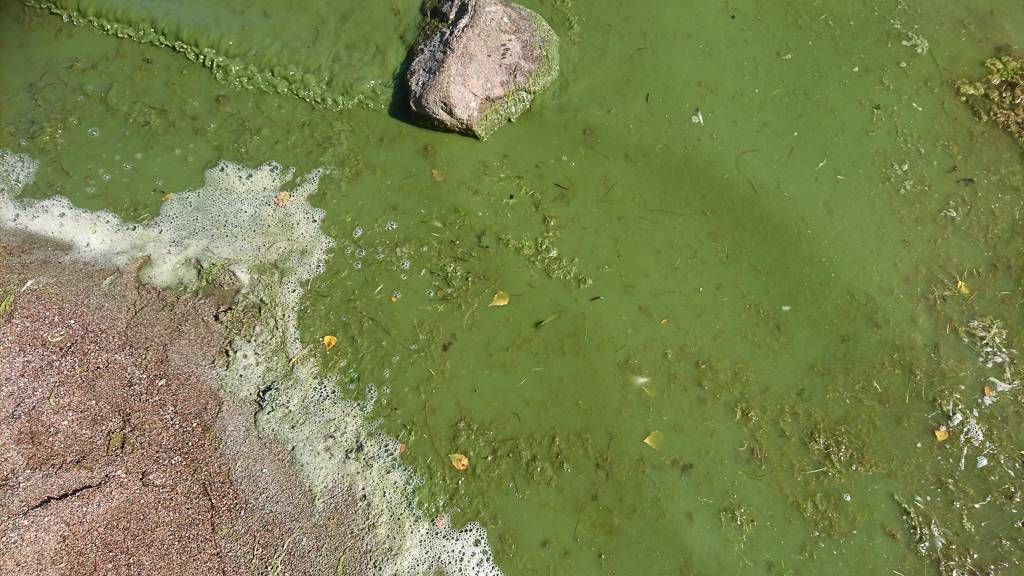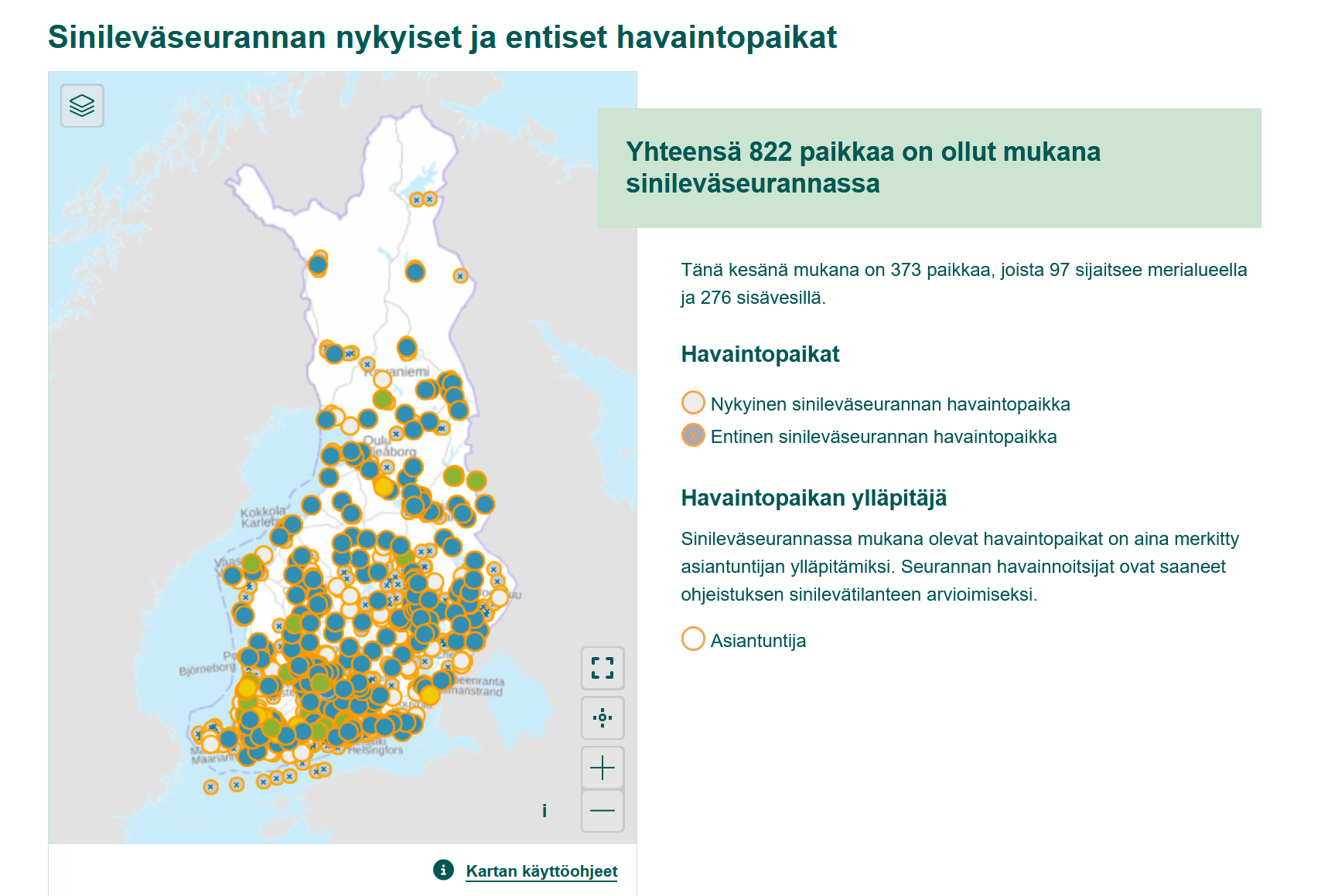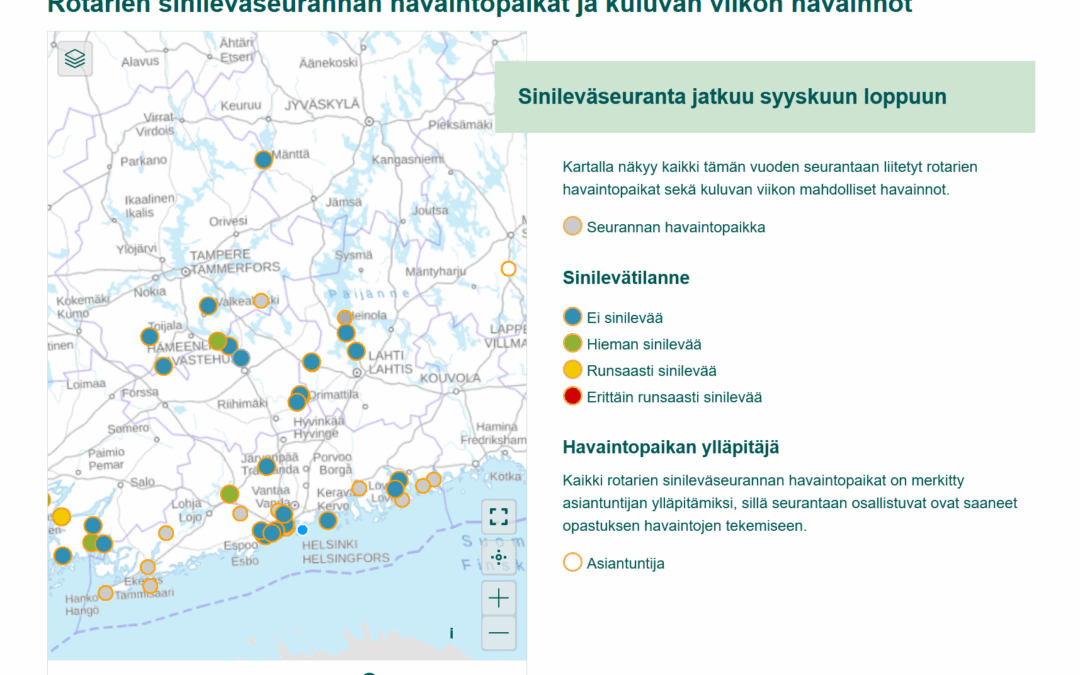The Rotarians began blue-green algae monitoring in cooperation with the Finnish Environment Institute (SYKE) in 2020. At present, there are already a total of 92 observation sites maintained by Rotarians. Of these, 53 are at sea and 39 in inland waters.
“Blue-green algae have been monitored in Finland for about fifty years. The authorities have several hundred observation sites across the country. In this land of thousands of lakes and along its long coastline, that is not enough, which is why the help of the Rotarians is needed,” says Kaisu Annala, Chair of the Baltic Sea Forum in the district.
Blue-green algae are among the world’s oldest organisms, consisting of a single cell. They appeared on Earth as long as 2.7 billion years ago. Yes—billion. Like plants, they photosynthesize and produce oxygen.
However, they are not actually algae but cyanobacteria, and there are about 80 different species of them constantly present in the Baltic Sea. In summer, they begin to “bloom”—although bacteria don’t literally bloom. Individual blue-green algae can be seen in the water as greenish or yellow-brown flakes or filaments. If there are enough nutrients and warmth, and the weather is calm, the algae produce abundant strands that form large surface rafts. These mass occurrences can, however, break up quickly when the weather changes. Blue-green algae that accumulate on shores appear as bright green mats or, when dried, even turquoise-colored layers.

Most blue-green algae are harmless, but unfortunately, toxic and non-toxic species cannot be distinguished with the naked eye. Some blue-green algae produce liver and nerve toxins. Dogs and cattle have died after drinking such water.
In Finland, no serious poisonings have occurred in humans. However, skin rashes, headaches, and fever may result from swimming in water with blue-green algae. Children who swallow water—whether accidentally or on purpose—are at real risk.
Blue-Green Algae Monitoring
A blue-green algae mass is like porridge made up of small cell clusters, and it breaks apart when stirred with a stick. Other filamentous algae, in contrast, cling to the stick in tufts. Based on this, it is easy to test whether the growth is blue-green algae or some other, less harmful algae.
The blue-green algae test itself is also simple. Collect water in a transparent container. Let it stand, and it is easy to see if individual cells rise to the surface. The amount of blue-green algae is assessed on a four-point scale: no algae, little algae, plenty of algae, very abundant algae. This result can be submitted via the Lake-Sea-Wiki app’s observation tool, making it visible on a public map. The application was created by SYKE, the Finnish Environment Institute. The same app also records results from water backpack tests.
Would you like to know if there is blue-green algae at your swimming spot? Monitoring is easy, and Lake-Sea-Wiki is convenient. Join in!
Text: Kaisu Annala, Chair of the Baltic Sea Forum
https://www.jarviwiki.fi/wiki/Valtakunnallinen_sinilev%C3%A4seuranta
https://www.jarviwiki.fi/wiki/Rotarien_sinilev%C3%A4seuranta

